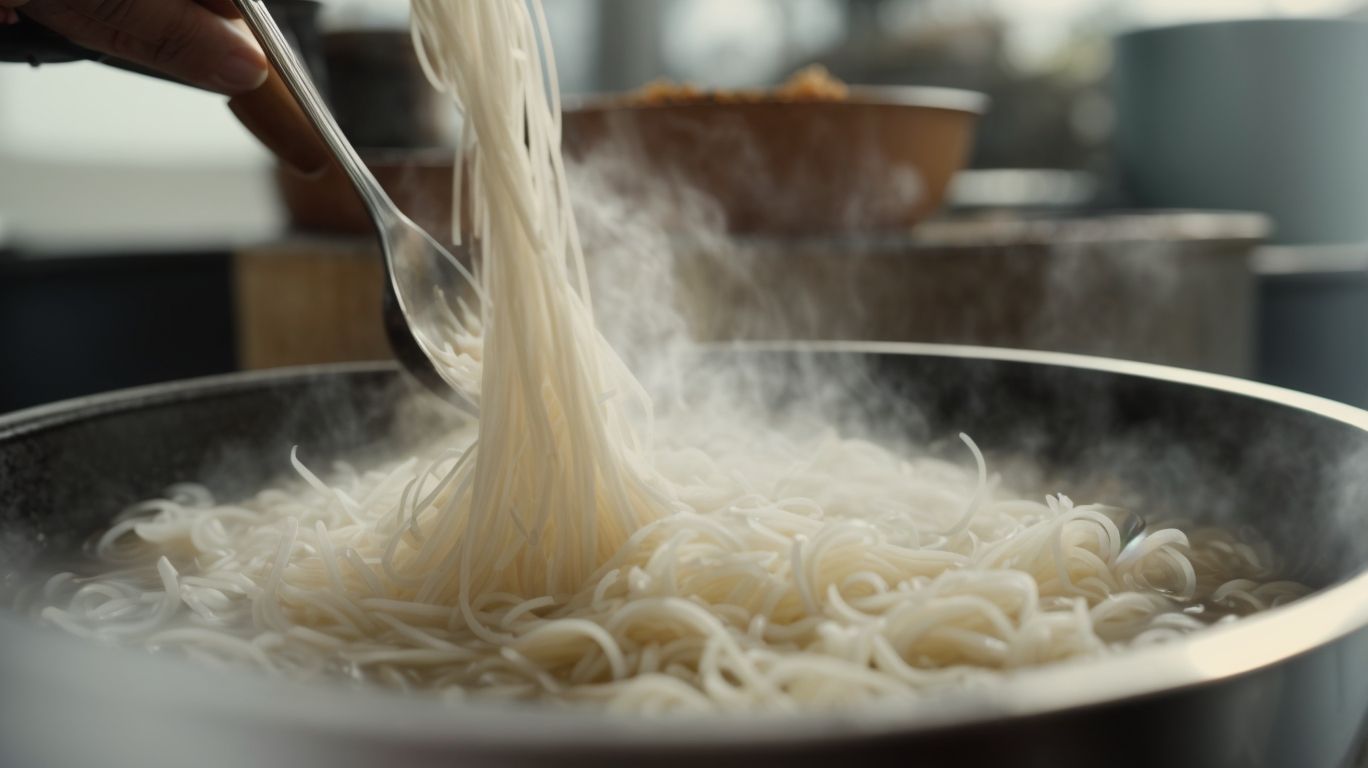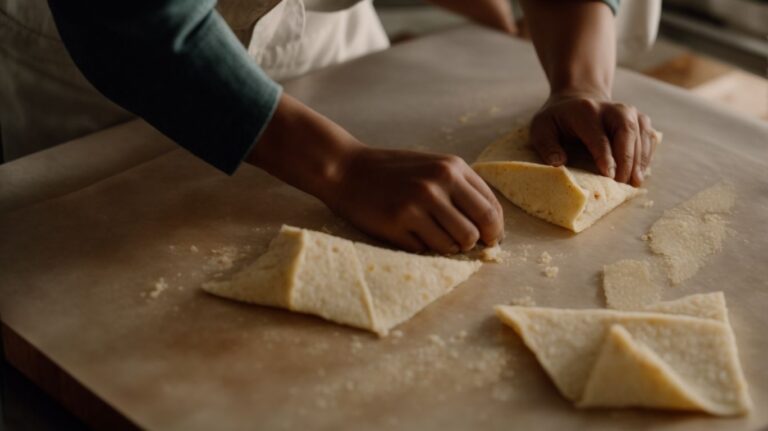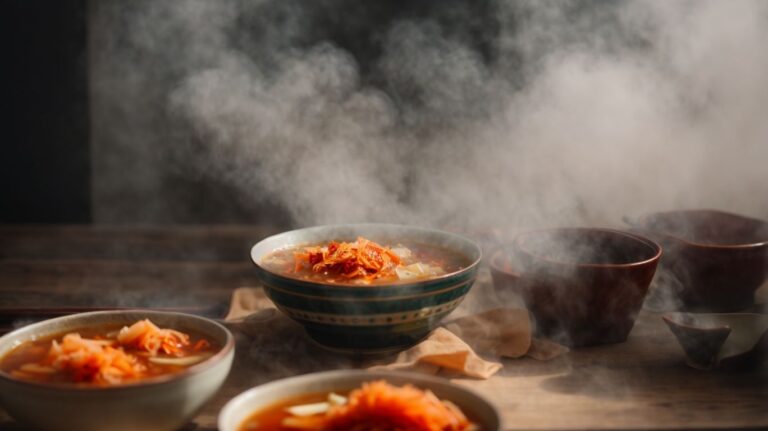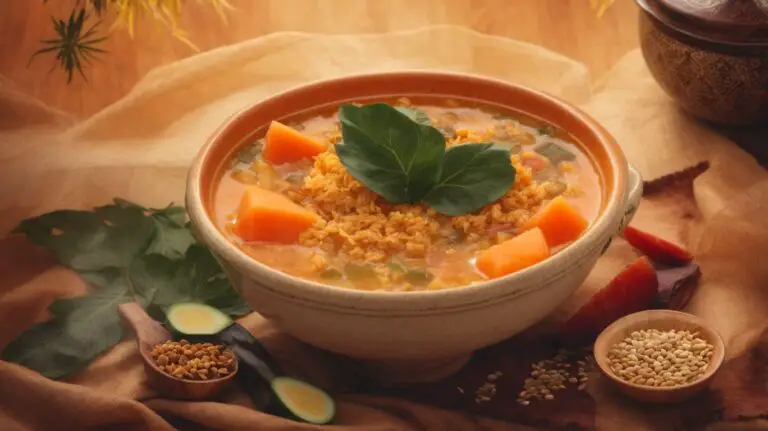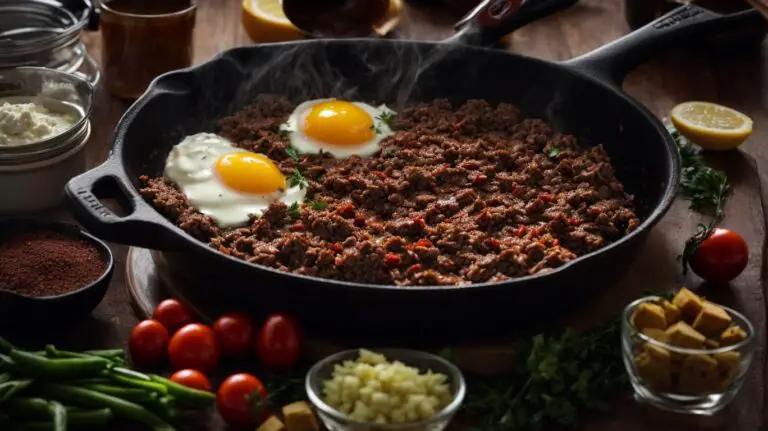How to Cook Rice Noodles Without Sticking?
Are you tired of your rice noodles sticking together and ruining your dish?
We explore the reasons behind why rice noodles stick and provide practical tips on how to cook them perfectly every time.
From rinsing the noodles before cooking to using enough water and cooking for the right amount of time, we have got you covered.
Stay tuned for some expert tips on cooking the perfect rice noodles without any sticking issues.
Key Takeaways:
What are Rice Noodles?
Rice noodles are a staple in Asian cuisine, known for their versatility and delicate texture. These noodles, made from rice flour and water, come in various types, including vermicelli, ho fun, and are commonly used in dishes like pad thai.
Rice noodles have their origins in southeast Asia, particularly in countries like China, Thailand, and Vietnam. Each region has its unique way of preparing and incorporating rice noodles into their culinary traditions.
Vermicelli, also known as rice sticks, are thin noodles that add a delicate flavor and texture to soups, stir-fries, and salads. Ho fun, on the other hand, consists of wide, flat noodles ideal for absorbing sauces in dishes like beef chow fun.
Pad thai, a famous Thai stir-fried noodle dish, showcases the versatility of rice noodles, combining sweet, sour, and savory flavors with a mix of ingredients like shrimp, tofu, eggs, and peanuts.
Why Do Rice Noodles Stick?
The issue of rice noodles sticking often arises due to factors such as improper cooking methods in stir-fries or inadequate soaking. Understanding the texture and composition of rice noodles, especially in dishes like pad thai, is crucial to prevent sticking.
When preparing rice noodles, the moisture content plays a significant role in determining their stickiness. If the noodles are not properly drained after rinsing, excess moisture can lead to clumping and sticking during cooking. The type of cooking technique used can also impact the stickiness of the noodles. Stir-frying on high heat without enough oil or overcrowding the pan can cause the noodles to stick together.
To avoid sticky noodles, it is important to follow specific cooking instructions for different types of dishes. For example, for pad thai, the noodles should be cooked slightly under to allow for further cooking when combined with the sauce. Overcooking the noodles can result in them becoming mushy and sticking excessively.
Not Rinsing the Noodles
One common mistake leading to sticky rice noodles is not rinsing them properly before cooking. The instructions on the package, especially for varieties like vermicelli and ho fun, often emphasize the importance of rinsing to remove excess starch.
Rinsing the rice noodles before cooking is crucial to avoid a gluey texture in the final dish.
When you skip this step, the noodles retain a high amount of starch, which can cause them to clump together during cooking. Vermicelli and ho fun, being delicate rice noodle types, are particularly sensitive to excess starch, leading to a gummy and unpleasant result if not rinsed properly. By following the package instructions and giving the noodles a good rinse, you can ensure they cook evenly and separate easily, enhancing the overall texture and taste of your dish.
Cooking in Too Little Water
Using insufficient water when cooking rice noodles, especially in stir-fry dishes, can lead to them clumping together and sticking. Adequate water volume is essential for ensuring proper hydration and separation during the cooking process.
When rice noodles are overcrowded in a pan with not enough water, they tend to stick together, resulting in a sticky mess rather than a delicate texture. This can significantly affect the overall taste and presentation of your dish. Proper hydration is crucial as it not only prevents clumping but also ensures that the noodles cook evenly and reach the desired consistency. Remember, adding enough water while cooking rice noodles is the key to achieving that satisfying, slurp-worthy texture.
Overcooking the Noodles
Overcooking rice noodles, whether in boiling water or stir-frying, can contribute to their stickiness. Maintaining the right cooking time, especially in popular dishes like pad thai, is crucial to avoid the noodles becoming mushy and sticky.
When rice noodles are overcooked in boiling water, they can lose their firmness and turn soggy, leading to a less appetizing texture in the final dish. Similarly, in stir-frying, if the noodles stay in the pan for too long, they might become clumpy and difficult to separate.
To achieve the ideal texture, it’s essential to follow the package instructions for cooking times precisely. After cooking, immediately rinse the noodles under cold water to stop the cooking process and prevent them from sticking together. These simple steps can elevate your dish to a whole new level of deliciousness.
How to Cook Rice Noodles without Sticking?
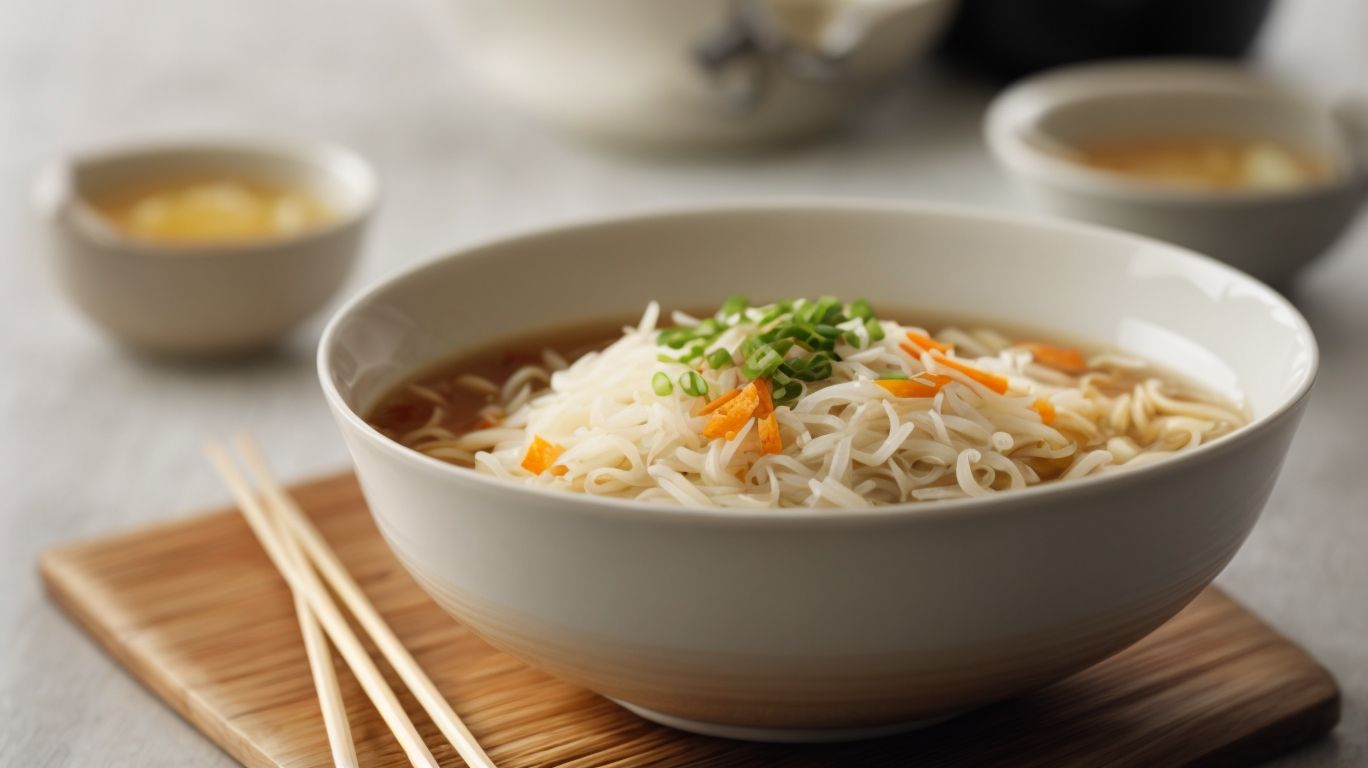
Credits: Poormet.Com – Dennis Martin
Cooking rice noodles without sticking requires simple yet effective techniques. Whether preparing stir-fries or traditional dishes like vermicelli or ho fun, following proper cooking methods is key to achieving non-sticky results.
To begin, start by selecting the right type of rice noodles for your dish; thinner noodles like vermicelli are best for soups, while wider noodles like ho fun work well in stir-fries. Before cooking, soak the noodles in hot water until they are pliable but still slightly firm. When boiling the noodles, use a large pot with plenty of water to prevent them from clumping together. Stir the noodles occasionally to ensure even cooking.
Rinse the Noodles Before Cooking
Rinsing rice noodles before cooking is a crucial step to prevent sticking. Following the instructions on the package, especially for dishes like pad thai, ensures that excess starch is removed, leading to better cooking outcomes.
When preparing rice noodles, a common mistake is to skip the rinsing process, resulting in clumpy noodles that don’t cook evenly. The key is to use cold water to rinse the noodles, swishing them gently to separate and remove surface starch. This simple step not only prevents the noodles from sticking together but also helps in achieving the desired texture in your dishes.
Use Enough Water
Ensuring an adequate amount of water when cooking rice noodles is essential to prevent them from sticking. Whether in stir-fry dishes or boiling water, sufficient water volume promotes proper texture and separation.
When stir-frying, using too little water can lead to the noodles clumping together, resulting in a gloppy mess rather than a dish with distinct, fluffy strands. On the other hand, in boiling water, insufficient water can cause the noodles to become mushy and overcooked, losing their firmness and becoming unappetizing.
To determine the right amount of water, a good rule of thumb is to use at least 4 cups of water per 4 ounces of rice noodles. This ensures that the noodles have enough space to move freely in the water and cook evenly, yielding a perfect al dente texture.
Cook for the Right Amount of Time
Cooking rice noodles for the correct duration is crucial in preventing them from sticking. Whether in stir-fries, boiling water, or dishes like pad thai, adhering to precise cooking times ensures the ideal texture and consistency.
When rice noodles are undercooked, they can turn out too firm and lack that desirable chewy texture. On the flip side, overcooking can make them mushy and too soft, losing their distinct al dente quality. For stir-fries, it’s typically recommended to soak the rice noodles in hot water for about 6-8 minutes until they are just tender enough to stir-fry quickly without sticking together. Pad thai, a popular Thai dish, often calls for cooking the noodles for about 4-5 minutes in boiling water for that perfect balance of firmness and slipperiness.
Tips for Cooking Perfect Rice Noodles
Achieving perfect rice noodles involves following a few essential tips. From using cold water for rinsing to adding oil during cooking and employing a non-stick pan, these methods enhance the cooking process and prevent sticking.
Using cold water to rinse the rice noodles is crucial as it helps remove excess starch that can lead to a gummy texture. Adding oil to the cooking water not only prevents the noodles from clumping together but also adds a subtle flavor to the dish. When using a non-stick pan, the noodles are less likely to stick to the bottom, resulting in a more even cooking process. Post-cooking rinsing under cold water stops the cooking process immediately and helps maintain the noodles’ texture and prevents overcooking.
Use Cold Water for Rinsing
Rinsing rice noodles with cold water before cooking is a recommended practice to prevent sticking. This step, particularly crucial for recipes like pad thai, helps to remove excess starch and maintain the noodles’ integrity.
When you rinse rice noodles with cold water, it stops the cooking process abruptly, ensuring they do not overcook and become mushy. Rinsing with cold water helps in getting rid of any leftover debris from the noodles, contributing to a cleaner taste. This method is essential in recipes where each noodle needs to be distinct and separate, such as stir-fries or noodle salads, guaranteeing a satisfying mouthfeel and appearance to the dish.
Add Oil to the Water
Incorporating oil into the water when cooking rice noodles is a smart technique to prevent sticking. The addition of oil helps to create a protective layer around the noodles, enhancing their separation during the cooking process.
By adding oil, you ensure that the noodles do not clump together, resulting in a beautifully cooked batch that is ideal for stir-fries, soups, or noodle salads.
This simple trick not only saves you from the hassle of dealing with a gloopy mess but also enhances the overall texture and appearance of the dish.
The slick coating from the oil promotes a smoother cooking process, allowing the noodles to glide effortlessly in the pot, making it easier to handle and monitor the cooking progress.
Stir the Noodles While Cooking
Regularly stirring rice noodles during the cooking process is essential for preventing them from sticking. Whether in stir-fries or classic dishes like pad thai, gentle stirring promotes even cooking and texture maintenance.
When cooking rice noodles, the key is to have them fully submerged in hot water or broth. Once they start softening, use a pair of tongs or chopsticks to gently separate them. Stirring the noodles helps prevent them from clumping together and sticking to the pot or each other.
It’s crucial to stir the noodles consistently but gently to avoid breaking them apart. For dishes like pad thai, where the noodles are a central element, this practice ensures that each strand cooks evenly and absorbs the flavors of the sauce.
Use a Non-Stick Pan
Opting for a non-stick pan when preparing rice noodles can significantly reduce the risk of sticking. The smooth surface of non-stick pans facilitates easy cooking and prevents the noodles from clinging to the surface.
Furthermore,
- non-stick pans require lesser oil or butter, promoting healthier cooking without compromising on taste.
- The even heat distribution of these pans ensures uniform cooking of the noodles, eliminating the need for constant stirring.
- When selecting a non-stick pan for rice noodles, it’s essential to choose one with a flat bottom to allow proper heat conduction.
- Opt for a pan with a sturdy handle for easy maneuvering.
- Remember to follow the manufacturer’s guidelines for care and maintenance to prolong the lifespan of your non-stick pan.
Rinse in Cold Water After Cooking
After cooking rice noodles, rinsing them in cold water helps to stop the cooking process and prevent sticking.
This post-cooking rinse is crucial as it preserves the noodles’ texture and reduces residual starch, ensuring they remain firm yet tender. By rinsing, it effectively halts the carryover cooking, preventing the noodles from becoming mushy or overcooked. This step is especially vital in recipes like pad thai, where the noodles need to maintain a distinct chewiness and separate easily. Rinsing aids in removing excess surface starch, preventing them from clumping together and forming a gummy texture that could disrupt the overall dish’s balance.
Conclusion
Mastering the art of cooking rice noodles without sticking is achievable by following simple yet effective techniques. From proper rinsing to precise cooking times, these methods ensure delightful results in various dishes like stir-fries and noodle soups.
When preparing rice noodles, be sure to rinsing them thoroughly under cold water until it runs clear; this step removes excess starch and prevents clumping during cooking.
Next, choose an appropriate water volume that allows the noodles to move freely in the pot without overcrowding. Remember to stir gently throughout the cooking process to prevent them from sticking together.
Also, keep a close eye on the cooking duration as overcooking can lead to mushy noodles.
Frequently Asked Questions
How to Cook Rice Noodles Without Sticking?
1. Why do rice noodles tend to stick together while cooking?
Rice noodles have a high starch content, which causes them to stick together when cooked in boiling water.
2. Can I use cold water to prevent rice noodles from sticking?
Yes, you can soak the rice noodles in cold water for about 10 minutes before cooking to prevent them from sticking together.
3. How much water should I use to cook rice noodles?
Generally, you should use enough water to fully cover the noodles. However, the exact amount may vary depending on the brand and thickness of the noodles.
4. What can I add to the cooking water to prevent rice noodles from sticking?
You can add a tablespoon of oil or a pinch of salt to the cooking water to prevent the noodles from sticking together.
5. How long should I cook rice noodles to prevent them from sticking?
Rice noodles should be cooked for 3-4 minutes in boiling water. Overcooking can cause them to become mushy and stick together.
6. How can I keep cooked rice noodles from sticking together?
After cooking the noodles, rinse them with cold water to remove excess starch and prevent them from sticking together. Adding a little bit of oil can also help.

